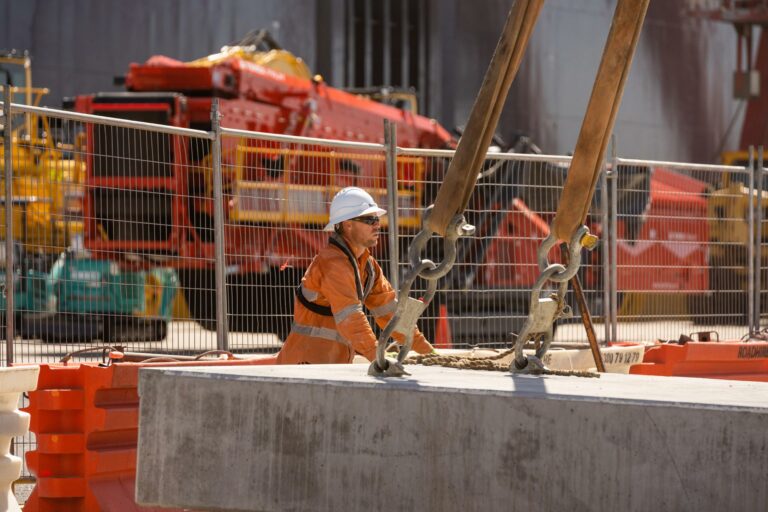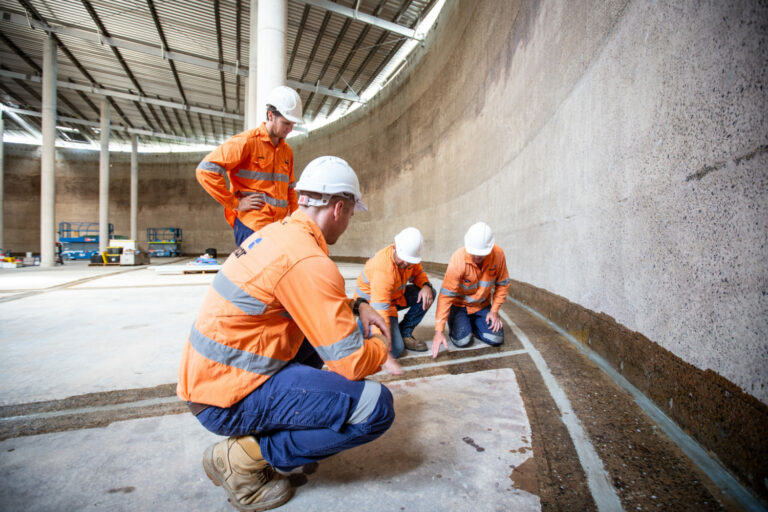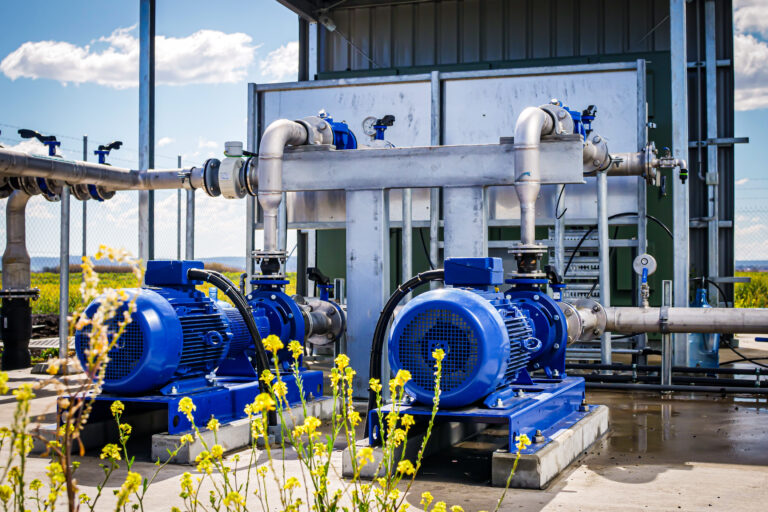For Pensar, Indigenous engagement and cultural heritage management begin with mutual understanding.
Australia is home to the world’s oldest continuous living culture – something we can all take pride in as a nation. As the First Australians and Traditional Custodians of the land upon which we live and work today, Aboriginal and Torres Strait Islander peoples maintain deep connections with country. The traces of these ancient cultures can be observed to this day all around us. Pensar is committed to proactive and constructive Indigenous engagement and cultural heritage management. Indigenous communities play an active role in caring for the natural environment and landscape, particularly so in the regional and remote locations where Pensar does much of its work.
Uncovering the unexpected in Walgett
Pensar Project Manager Nic Cull and a crew of six were working on a weir and fishway on the Barwon River in Walgett when their excavator unearthed some unexpected findings. “As the site was potentially culturally sensitive, it had been assessed by the local environment and heritage consultants,” Nic recalls. “We’d received the all clear for works to proceed, but when we uncovered some tracts of charcoal, we got the archaeologists back for another look. Some of the Traditional Custodians were concerned it could be remnants of firepits from Aboriginal settlements. “But after investigating, the archaeologists figured it was actually burnt tree roots, possibly caused by a lightning strike. Several of the local Elders visited the site to check out what we’d uncovered and agreed it wasn’t of any heritage significance, so they were happy for us to get on with the job.” Despite the false alarm and slight interruption to works, Nic and the crew were pleased with the process. “Sure it created some issues for us – we had to temporarily halt work in one area and it created some access challenges – but it was an interesting process that was well managed. As I said to the crew, it’d be pretty exciting to discover something of cultural significance, but if not, we can get back to work, so it’s a win-win situation! It’s important that we appreciate cultural heritage and have the processes in place to manage any sensitive situations.”
Treading lightly in Toorale National Park
This experience at Walgett will no doubt prove to be a valuable rehearsal for Pensar’s upcoming weir and fishway works in the Toorale National Park near Bourke – a site of highly significant cultural heritage. As Nic puts it, there are artefacts ‘literally everywhere’. “Toorale has multiple significant archaeological sites and scatters all over the place. Some of the oldest and most significant artefacts discovered in recent years have come from Toorale. So the project requires an Aboriginal Heritage Impact Permit and our work will be carefully managed and closely monitored. “These are awesome jobs. They’re interesting technically. They’re in amazing places. And there are important Indigenous engagement and cultural heritage considerations, not to mention environmental. This is the sort of work we love to do and do well.”
Working with the Quandamooka and Seqwater on Straddie
Pensar has delivered multiple water infrastructure projects on Stradbroke Island on behalf of Seqwater – in close consultation with the Quandamooka People. Water Project Manager Laura Arias says the process is important for Seqwater and Pensar. “Seqwater trusts us to deliver critical infrastructure works and to respect the local community, the natural environment and cultural heritage. Good relationships and communication are key to a successful process. We take the time to get to know each other, understand our mutual objectives, explain the work we’re doing and appreciate the people and places we’re working with. “Doing this work well comes with many challenges – technical, environmental, social and cultural. Delivering a successful project for the client and community involves effectively negotiating all of these areas. I think that is something Pensar takes the time to do well.”
Charting the course on the Comet River
Laura is currently planning a project on the Comet River for Central Highlands Regional Council – a raw water pump intake and pier – with works required alongside a cultural heritage exclusion zone. “A risk assessment has been developed so we have a detailed report identifying areas of concern. A management plan outlines the steps we’ll take to ensure we don’t disturb any sensitive areas. “It’s about taking the time to communicate and understand each other. We explain the construction methodology – what we’ve been asked to do and what that involves. We learn of any concerns early and plan our work accordingly. Having these conversations and plans in place early give us a very clear path to follow to deliver a successful project for all stakeholders.”
Read our next instalment where we share how our Reconciliation Action Plan is a springboard for shared success.



















